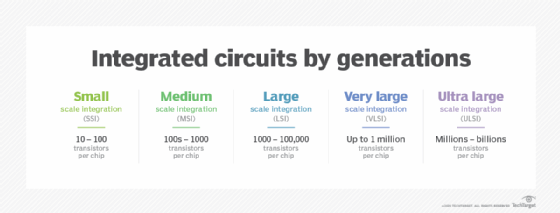baseboard management controller (BMC)
What is a baseboard management controller (BMC)?
A baseboard management controller (BMC) is a specialized service processor that remotely monitors the physical state of a host system, such as a computer, network server or other hardware devices.
A BMC is used for remote monitoring and management of a host system. It uses sensors and communicates with the system administrator (sysadmin) through an independent connection. These sensors measure the host system's internal physical variables such as temperature, humidity, power supply voltage, fan speeds, communications parameters, and operating system (OS) functions. If any of these variables stray outside specified limits, the BMC notifies the administrator who can take corrective action by remote control.
The monitored device can be power cycled or rebooted as necessary. This enables a single administrator to manage numerous servers and other devices simultaneously and remotely, reducing the operating cost of the network and helping to ensure its reliability.
Baseboard management controller physical setup
The BMC is part of the Intelligent Platform Management Interface (IPMI). It is usually an Arm processor, meaning it is based on a reduced instruction set computer architecture. In addition, it is a system-on-a-chip, which is an integrated circuit that combines many elements on a single chip -- such as graphics and control logic -- instead of using multiple components.
The BMC is usually contained in the motherboard or main circuit board of the device to be monitored. This device might be a computer, server, network device or storage device. The BMC has multiple connections to the device, which allows it to not only monitor hardware, but also do the following:
- Monitor flash BIOS and Unified Extensible Firmware Interface firmware.
- Provide console access via a serial or physical/virtual keyboard, video, mouse (KVM).
- Create event logs for failure analyses.
- Provide LED-guided diagnostics.
- Perform blade inventory.
- Monitor sensors for voltages, temperature, fans, etc..
- Power cycle servers and other host systems.

The BMC can be accessed remotely through a dedicated or shared network connection. It can utilize either shared or dedicated network interface cards (NICs) for remote access.
Key features of baseboard management controller
Most BMCs support the following features:
- IPMI.
- Dedicated NIC for remote management over a network.
- Events logging.
- Reports about health status and hardware monitoring.
- Out-of-band server monitoring, control, and management over local area network.
- Chassis LED indicators for event notifications.
- Platform Event Filtering (PEF) to take specific action for certain events.
- Multi-session user and alert destinations.
- Automatic server restart and recovery.
\

Benefits of baseboard management controller
A BMC allows remote monitoring and management of many types of devices, allowing sysadmins to perform many administration tasks remotely. Examples of such tasks include the following:
- Power cycling.
- BIOS installations or re-installations.
- Firmware updates or upgrades.
- Monitoring fan speeds and temperatures.
If there is a failure in any of these activities, the BMC sends an alert to the administrator. It will also notify the administrator -- through email, text or another specified channel -- if there is a problem in the system being monitored (i.e., hardware failure, performance error or faulty operation).
Baseboard management controller in servers
In servers, a BMC can perform many tasks that an administrator would need to accomplish via physical visits. These include power cycling servers, monitoring fan speeds, monitoring server component temperatures, and raising alerts about hardware failures.
A BMC offers big advantages in multi-server, multi-rack environments, which are typical of modern data centers. Without a BMC, administrators would have to physically connect with each server to perform various monitoring and maintenance tasks. This can quickly become time-consuming. Since a BMC eliminates the need for physical connections, it helps reduce operational costs, especially in vast, diverse environments.
Today, servers include a BMC for remote monitoring and maintenance as do many devices in a data center, such as switches, storage devices and network devices.
Baseboard management controller user interface
Most modern BMCs support a web-based graphical user interface (GUI) and user interface data files. Usually, the GUI has a default DHCP/Static IP address. However, these default settings can be changed from the system BIOS setup. Administrators can log into the GUI by entering the BMC-embedded server IP address or URL into a web browser's address bar. Most BMCs support common browsers like Microsoft Edge and Mozilla's Firefox.
When the administrator tries to connect to the BMC, they will be required to enter their username and password on the login screen. This Secure Sockets Layer authentication prevents unauthorized or malicious users from accessing the BMC web server. In addition, the BMC's PHP: Hypertext Preprocessor records all user information, including user ID and privilege level. Once authentication is complete, administrators can manage the server remotely.
Compare eight tools for IT monitoring. Check out the nine most common network issues and how to solve them and the ultimate guide to network management in the enterprise.




